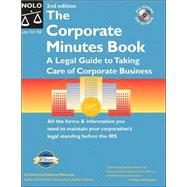| Introduction | |||||
|
2 | (1) | |||
|
3 | (1) | |||
|
3 | (1) | |||
|
4 | (1) | |||
|
5 | ||||
|
|||||
|
2 | (3) | |||
|
5 | (1) | |||
|
6 | ||||
|
|||||
|
2 | (1) | |||
|
3 | ||||
|
|||||
|
2 | (1) | |||
|
2 | (1) | |||
|
|||||
|
2 | (1) | |||
|
2 | (1) | |||
|
2 | (1) | |||
|
3 | (1) | |||
|
3 | (2) | |||
|
5 | (1) | |||
|
5 | (1) | |||
|
6 | (2) | |||
|
8 | (1) | |||
|
8 | (1) | |||
|
9 | (1) | |||
|
9 | (2) | |||
|
11 | (4) | |||
|
15 | ||||
|
|||||
|
2 | (9) | |||
|
11 | ||||
|
|||||
|
3 | (1) | |||
|
4 | (7) | |||
|
11 | ||||
|
|||||
|
2 | (2) | |||
|
4 | ||||
|
|||||
|
2 | (1) | |||
|
3 | (3) | |||
|
6 | ||||
|
|||||
|
2 | (1) | |||
|
3 | (5) | |||
|
8 | (2) | |||
|
10 | (1) | |||
|
11 | (3) | |||
|
14 | (4) | |||
|
18 | ||||
|
|||||
|
3 | (5) | |||
|
8 | (2) | |||
|
10 | (2) | |||
|
12 | (1) | |||
|
13 | (2) | |||
|
15 | ||||
|
|||||
|
3 | (1) | |||
|
3 | (8) | |||
|
11 | ||||
|
|||||
|
3 | (3) | |||
|
6 | (2) | |||
|
8 | (2) | |||
|
10 | (3) | |||
|
13 | ||||
|
|||||
|
2 | (3) | |||
|
5 | (3) | |||
|
8 | ||||
|
|||||
|
2 | (2) | |||
|
4 | (7) | |||
|
11 | (5) | |||
|
16 | (3) | |||
|
19 | ||||
|
|||||
|
4 | (1) | |||
|
5 | (3) | |||
|
8 | (2) | |||
|
10 | (12) | |||
|
22 | ||||
|
|||||
|
3 | (2) | |||
|
5 | (1) | |||
|
6 | (3) | |||
|
9 | (1) | |||
|
10 | (2) | |||
|
12 | (3) | |||
|
15 | (2) | |||
|
17 | (2) | |||
|
19 | (6) | |||
|
25 | ||||
|
|||||
|
2 | (2) | |||
|
4 | (7) | |||
|
11 | ||||
|
|||||
|
3 | (1) | |||
|
4 | ||||
|
|||||
|
3 | (1) | |||
|
4 | ||||
|
|||||
|
2 | (3) | |||
|
5 | (1) | |||
|
6 | ||||
| Appendix A Corporate Contact Information | |||||
| Appendix B Tear-Out Forms | |||||
| Appendix C How to Use the CD-ROM |








